Household still life. "The history of the development of still life as a genre of painting"
still life still life
(French nature morte, Italian natura morta, literally - dead nature; Dutch stilleven, German Stilleben, English still life, literally - quiet or motionless life), a genre of fine art (mainly easel painting), which is dedicated to the image things surrounding a person, placed, as a rule, in real household environment and compositionally organized into a single group. Special organization motif (the so-called staging) is one of the main components of the figurative system of the still life genre. In addition to inanimate objects (for example, household items), still life depicts objects of wildlife, isolated from natural connections and thus turned into a thing - fish on the table, flowers in a bouquet, etc. Complementing the main motive, the still life may include image of people, animals, birds, insects. The image of things in a still life has its own artistic value, although in the process of development it often served to express symbolic content, solve decorative problems or accurately fix the objective world in natural science, etc. At the same time, still life can characterize not only things in themselves, but also social status, content and lifestyle of their owner, give rise to numerous associations and social analogies.
Still life motifs as details of compositions are already found in art. ancient east and antiquity, some phenomena in medieval art are partly comparable with still life Far East(for example, the so-called "flowers-birds" genre), but the birth of still life as an independent genre occurs in modern times, when attention to the material world, to its concrete-sensual image, develops in the work of Italian and especially Dutch Renaissance masters. The history of still life as a genre of easel painting, and in particular its type "trompe l" oeil (the so-called snag), is opened by the "Still Life" by the Italian Jacopo de Barbari (1504), which illusionistically accurately recreates objects. half of the XVI - early XVII centuries, which was facilitated by the natural-science inclinations characteristic of this era, the interest of art in everyday life and privacy man, as well as the very development of methods for the artistic development of the world (the works of the Dutchman P. Aartsen, the Fleming J. Brueghel Velvet, etc.).
The heyday of still life - XVII century. The diversity of its types and forms at that time is associated with the development of national realistic schools of painting. In Italy and Spain, the rise of still life was greatly facilitated by the work of Caravaggio and his followers ( cm. Caravaggism). The favorite themes of still life were flowers, vegetables and fruits, seafood, kitchenware etc. (P. P. Bonzi, M. Campidoglio, J. Recco, J. B. Ruoppolo, E. Baskenis and others). The Spanish still life is characterized by sublime severity and special significance of the image of things (X. Sanchez Cotan, F. Zurbaran, A. Pereda, etc.). Interest in the everyday nature of things, intimacy, often democratism of images were clearly manifested in the Dutch still life. It is characterized Special attention to the transmission of the light environment, the diverse texture of materials, the subtlety of tonal relationships and color scheme - from the exquisitely modest coloring of the "monochrome breakfasts" by V. Kheda and P. Klas to the intensely contrasting, coloristically spectacular compositions of V. Kalf ("desserts"). Dutch still life features abundance various types of this genre: "fish" (A. Beyeren), "flowers and fruits" (J. D. de Heem), "beaten game" (J. Venike, M. Hondekuter), allegorical still life "vanitas" ("vanity of vanities" ) and others. Flemish still life (mainly "markets", "shops", "flowers and fruits") stands out for its scope and at the same time decorative compositions: these are hymns to fertility and abundance (F. Snyders, J. Feit), In the 17th century. German (G. Flegel, K. Paudis) and French (L. Bozhen) still life are also developing. FROM late XVII in. in the French still life, the decorative trends of court art triumphed (flowers by J. B. Monnoyer and his school, hunting still life by A. F. Deport and J. B. Oudry). Against this background, the works of one of the most significant masters of French still life - J. B. S. Chardin, marked by rigor and freedom of composition, subtlety of color solutions, stand out with genuine humanity and democracy. AT mid-eighteenth in. in the period of the final formation of the academic hierarchy of genres, the term "nature morte" arose, which reflected the contemptuous attitude towards this genre of supporters of academicism, who preferred genres whose area was "living nature" ( historical genre, portrait, etc.).
In the 19th century the fate of the still life was determined by the leading masters of painting, who worked in many genres and involved the still life in the struggle aesthetic views and artistic ideas(F. Goya in Spain, E. Delacroix, G. Courbet, E. Manet in France). Among the masters of the 19th century who specialized in this genre, A. Fantin-Latour (France) and W. Harnet (USA) also stand out. The new rise of still life was associated with the performance of the masters of post-impressionism, for whom the world of things becomes one of the main themes (P. Cezanne, V. van Gogh). Since the beginning of the XX century. still life is a kind of creative laboratory of painting. In France, the masters of Fauvism (A. Matisse and others) follow the path of heightened identification of the emotional and decorative-expressive possibilities of color and texture, and the representatives of cubism (J. Braque, P. Picasso, X. Gris and others), using the the specifics of still life artistic and analytical possibilities, seek to establish new ways of conveying space and form. Still life also attracts masters of other trends (A. Kanoldt in Germany, G. Morandi in Italy, S. Lukyan in Romania, B. Kubista and E. Filla in the Czech Republic, etc.). Social trends in the still life of the 20th century are represented by the work of D. Rivera and D. Siqueiros in Mexico, R. Guttuso in Italy.
Still life appeared in Russian art in the 18th century. together with the affirmation of secular painting, reflecting the cognitive pathos of the era and the desire to truthfully and accurately convey the objective world ("tricks" by G. N. Teplov, P. G. Bogomolov, T. Ulyanov, etc.). Further development Russian still life for a considerable time had an episodic character. Its some rise in the first half of the XIX century. (F. P. Tolstoy, school of A. G. Venetsianov, I. T. Khrutsky) is associated with the desire to see beauty in the small and ordinary. In the second half of the XIX century. I. N. Kramskoy, I. E. Repin, V. I. Surikov, V. D. Polenov, I. I. Levitan turned to the still life of a sketchy nature only occasionally; The auxiliary significance of the still life in the artistic system of the Wanderers followed from their idea of the dominant role of the plot-thematic picture. Independent value still life-study increases at the turn of the XIX and XX centuries. (M. A. Vrubel, V. E. Borisov-Musatov). The heyday of Russian still life falls on the beginning of the 20th century. To his the best samples include impressionistic works by K. A. Korovin, I. E. Grabar; the works of the artists of the "World of Art" (A. Ya. Golovin and others) that subtly play with the historical and everyday character of things; sharply decorative images of P. V. Kuznetsov, N. N. Sapunov, S. Yu. Sudeikin, M. S. Saryan and other painters of the Blue Rose circle; bright still lifes imbued with the fullness of being by the masters of the "Jack of Diamonds" (P. P. Konchalovsky, I. I. Mashkov, A. V. Kuprin, V. V. Rozhdestvensky, A. V. Lentulov, R. R. Falk, N. S. Goncharova). The Soviet still life, developing in line with the art of socialist realism, is enriched with new content. In the 20-30s. it includes both the philosophical understanding of modernity in compositionally sharpened works (K. S. Petrov-Vodkin), and thematic “revolutionary” still lifes (F. S. Bogorodsky and others), and attempts to tangibly regain the “thing” rejected by the so-called non-objectives through experiments in the field of color and texture (D. P. Shterenberg, N. I. Altman), and a full-blooded recreation of the colorful richness and diversity of the objective world (A. M. Gerasimov, Konchalovsky, Mashkov, Kuprin. Lentulov, Saryan, A. A . Osmerkin and others), as well as the search for subtle color harmony, the poeticization of the world of things (V. V. Lebedev, N. A. Tyrsa and others). In the 40-50s. still lifes, which are significantly diverse in style, reflecting the essential features modern eras, created by P. V. Kuznetsov, Yu. I. Pimenov and others. In the 60-70s. P. P. Konchalovsky, V. B. Elkonik, V. F. Stozharov, A. Yu. Nikich are actively working in still life. Among the masters of still life in the Union republics, A. Akopyan in Armenia, T. F. Narimanbekov in Azerbaijan, L. Svemp and L. Endzelina in Latvia, N. I. Kormashov in Estonia stand out. The attraction to the increased "objectivity" of the image, the aestheticization of the world of things surrounding a person determined the interest in still life of young artists of the 70s and early 80s. (Ya. G. Anmanis, A. I. Akhaltsev, O. V. Bulgakova, M. V. Leis, etc.).
V. Kheda. "Breakfast with blackberry pie." 1631. Picture gallery. Dresden.
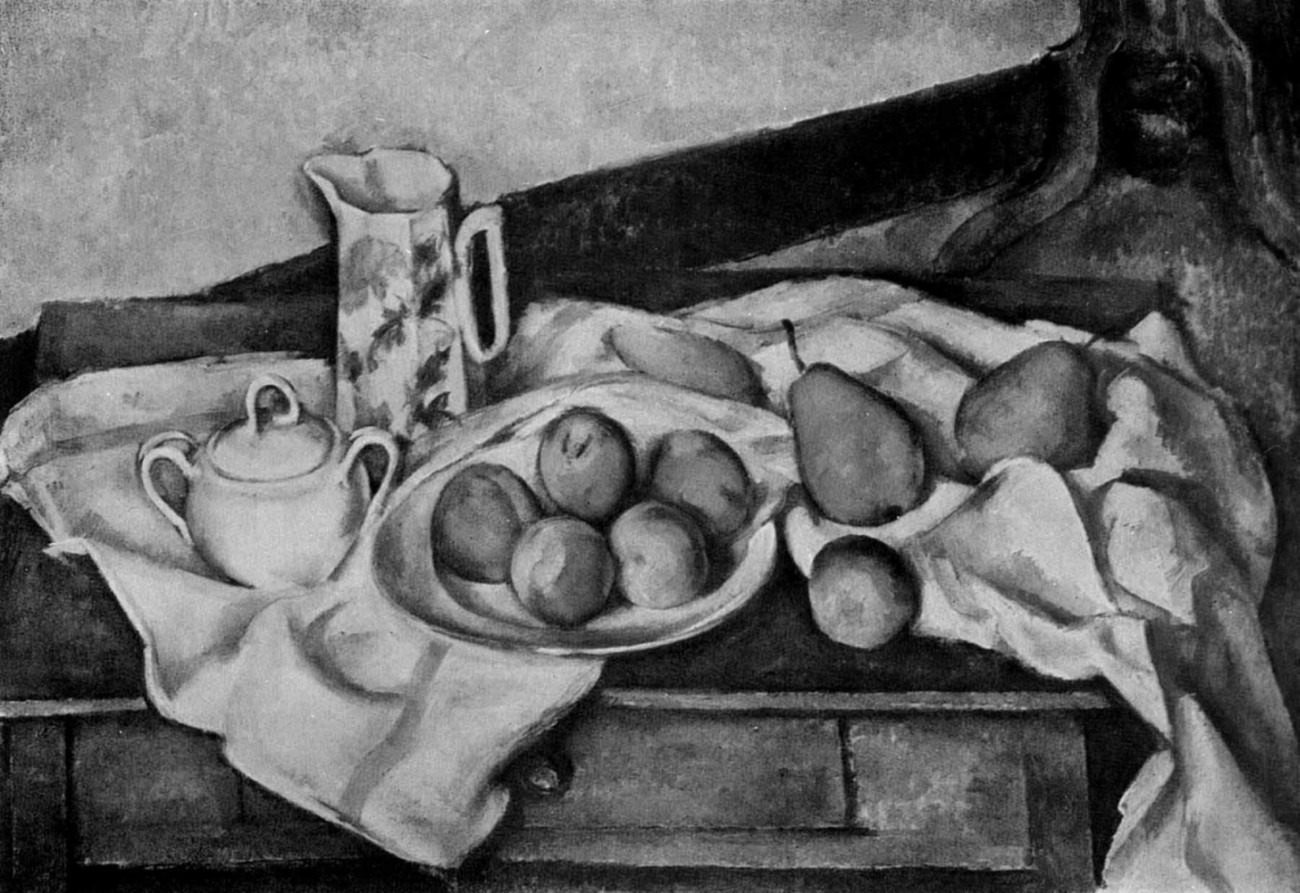
P. Cezanne. "Peaches and Pears" Late 1880s Museum of Fine Arts named after A. S. Pushkin. Moscow.
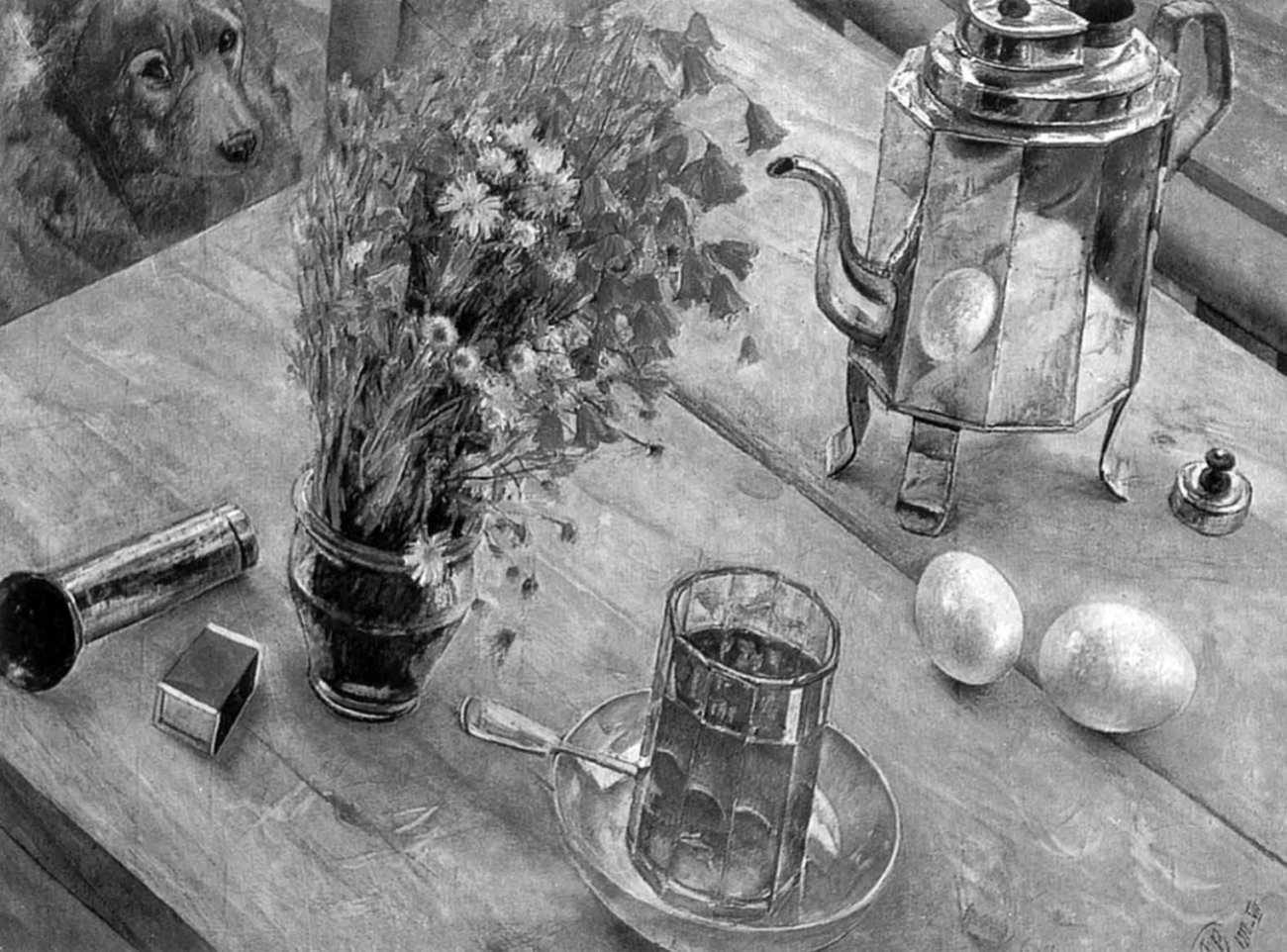
K. S. Petrov-Vodkin. "Morning still life". 1918. Russian Museum. Leningrad.
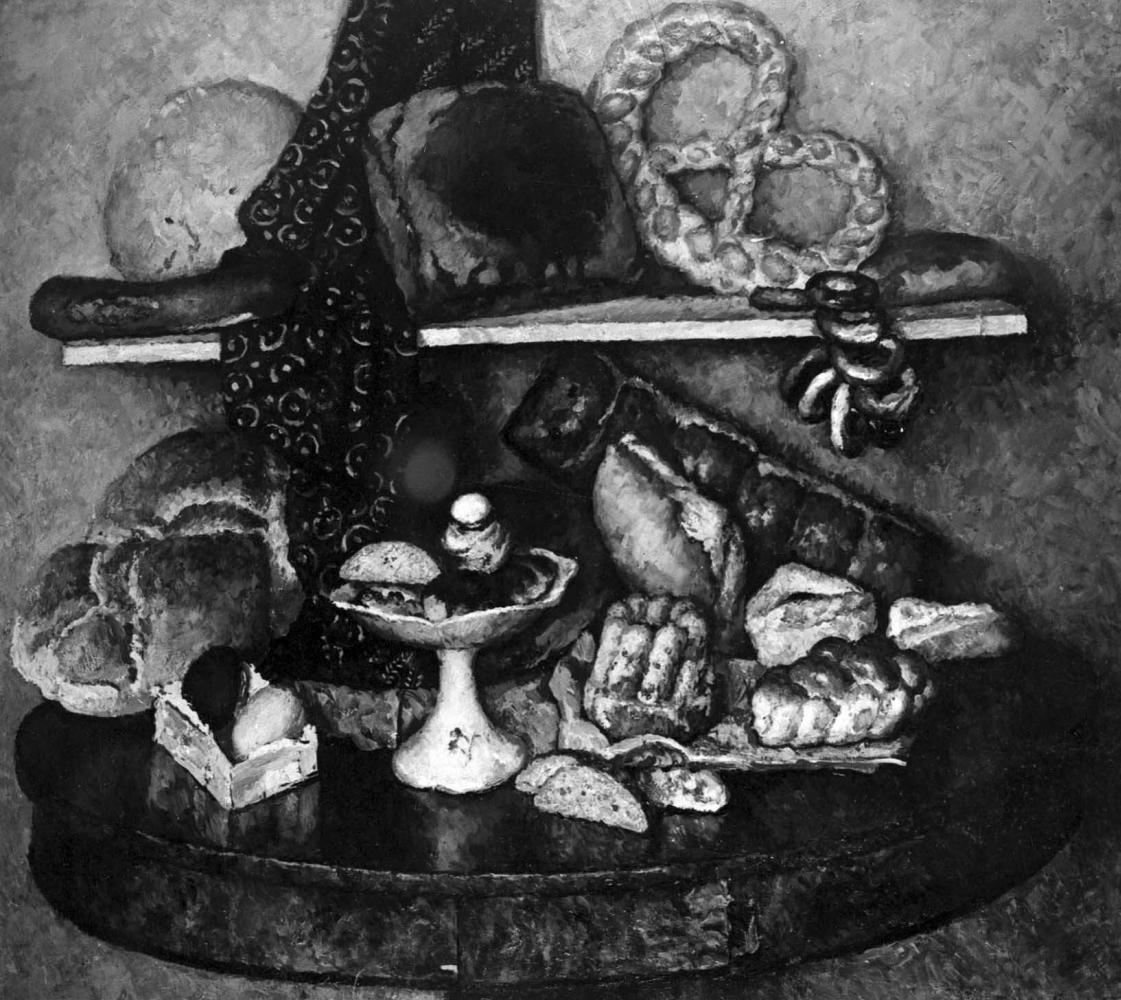
I. I. Mashkov. "Snedd Moscow: bread". 1924. Tretyakov Gallery. Moscow.
Literature: B. R. Vipper, The problem and development of still life. (Life of things), Kazan, 1922; Yu. I. Kuznetsov, Western European still life, L.-M., 1966; M. M. Rakova, Russian still life of the late XIX - early XX centuries, M., 1970; I. N. Pruzhan, V. A. Pushkarev, Still life in Russian and Soviet painting. L., (1971); Yu. Ya. Gerchuk, Living things, M., 1977; Still life in European painting of the 16th - early 20th century. Catalogue, M., 1984; Sterling Ch., La nature morte de l "antiquité a nos jours, P., 1952; Dorf B., Introduction to still-life and flower painting, L., 1976; Ryan A., Still-life painting techniques, L. , 1978.
Source: Popular art encyclopedia." Ed. Field V.M.; M.: Publishing house " Soviet Encyclopedia", 1986.)
still life(French nature morte - dead nature), one of the genres of painting. Still lifes depict the gifts of nature (fruits, flowers, fish, game), as well as things made by human hands (tableware, vases, clocks, etc.). Sometimes inanimate objects coexist with living beings - insects, birds, animals and people.
Still lifes included in plot compositions are already found in the painting of the Ancient World (wall paintings in Pompeii). There is a legend that the ancient Greek artist Apelles depicted grapes so skillfully that the birds mistook him for a real one and began to peck. As an independent genre, still life developed in the 17th century. and then experienced its bright heyday in the work of the Dutch, Flemish and Spanish masters.
In Holland, there were several varieties of still life. The artists painted “breakfasts” and “desserts” in such a way that it seemed as if a person was somewhere nearby and would soon return. A pipe smokes on the table, a napkin is crumpled, wine in a glass is not finished, a lemon is cut, bread is broken (P. Klas, V. Kheda, V. Kalf). Also popular were images of kitchen utensils, vases of flowers and, finally, “Vanitas” (“vanity of vanities”), still lifes on the theme of the frailty of life and its short-term joys, calling for remembering true values and taking care of saving the soul. Favorite attributes of "Vanitas" are a skull and a watch (J. van Strek. "Vanity of vanities"). For Dutch still lifes, as well as in general for the still life of the 17th century, the presence of hidden philosophical overtones is characteristic, a complex Christian or love symbolism(the lemon was a symbol of moderation, the dog was fidelity, etc.) At the same time, the artists recreated the diversity of the world in still lifes with love and delight (shimmers of silks and velvet, heavy carpet tablecloths, shimmering silver, juicy berries and noble wine). The composition of still lifes is simple and stable, subject to the diagonal or the shape of a pyramid. The main “hero” is always highlighted in it, for example, a glass, a jug. Masters subtly build relationships between objects, opposing or, conversely, matching their color, shape, surface texture. The smallest details are carefully written out. Small in size, these paintings are designed for close examination, long contemplation and comprehension of their hidden meaning.
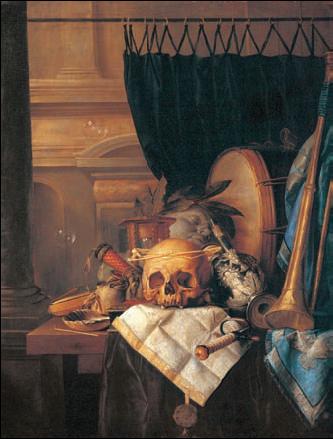
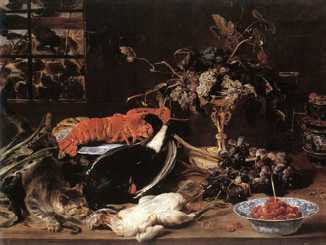
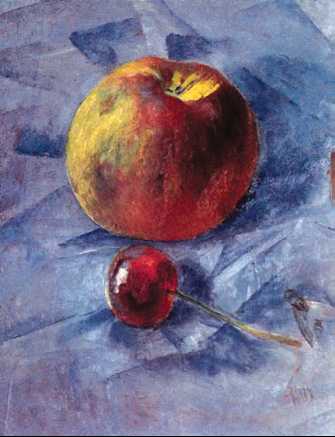
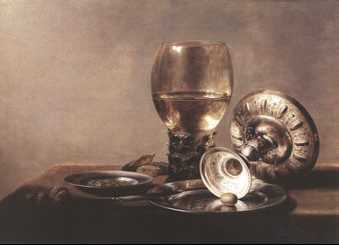
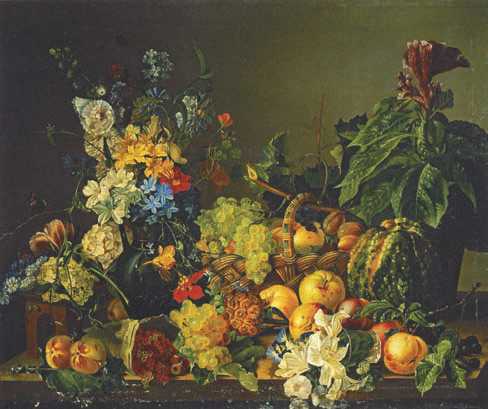
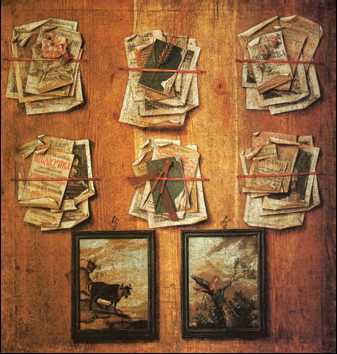
The Flemings, on the contrary, painted large, sometimes huge canvases intended to decorate the palace halls. They are distinguished by a festive multicolor, an abundance of objects, and the complexity of the composition. Such still lifes were called “shops” (J. Feit, F. Snyders). They depicted tables littered with game, seafood, bread, and next to them were the owners offering their goods. Abundant food, as if not fitting on the tables, hung down, fell out directly on the audience.
Spanish artists preferred to limit themselves to a small set of objects and worked in a restrained manner. color scheme. Dishes, fruits or shells in the paintings of F. Zurbarana and A. The fronts are sedately placed on the table. Their forms are simple and noble; they are carefully molded with chiaroscuro, almost tangible, the composition is strictly balanced (F. Zurbaran. "Still life with oranges and lemons", 1633; A. Pereda. "Still life with a clock").
In the 18th century the French master J.-B. FROM. Chardin. His paintings, depicting simple, solid utensils (bowls, a copper tank), vegetables, simple food, are filled with the breath of life, warmed by the poetry of the hearth and affirm the beauty of everyday life. Chardin also painted allegorical still lifes (Still Life with Attributes of the Arts, 1766).
In Russia, the first still lifes appeared in the 18th century. in decorative paintings on the walls of palaces and “dummy” paintings, in which objects were reproduced so accurately that they seemed real (G. N. Teplov, P. G. Bogomolov, T. Ulyanov). In the 19th century trickery traditions have been rethought. Still life is experiencing a rise in the first floor. 19th century in the work of F.P. Tolstoy, who rethought the traditions of "tricks" ("Berries of red and white currants", 1818), artists Venetian school, I. T. Khrutsky. In everyday objects, artists sought to see beauty and perfection.
A new heyday of the genre comes at the end. 19 - beg. 20th century, when the still life becomes a laboratory for creative experiments, a means of expressing the individuality of the artist. Still life occupies a significant place in the work of post-impressionists - V. van gogh, P. Gauguin and above all P. Cezanne. The monumentality of the composition, stingy lines, elementary, rigid forms in Cezanne's paintings are designed to reveal the structure, the basis of the thing and recall the unshakable laws of the world order. The artist sculpts the form with color, emphasizing its materiality. At the same time, elusive play of colors, especially cold blue, gives his still lifes a feeling of air and spaciousness. The line of the Cezanne still life was continued in Russia by the masters " Jack of Diamonds"(I.I. Mashkov, P.P. Konchalovsky etc.), combining it with the traditions of the Russian folk art. Painters "Blue Rose"(N.N. Sapunov, S. Yu. Sudeikin) created nostalgic, antique-style compositions. Philosophical generalizations permeate the still lifes of K. S. Petrova-Vodkina. In the 20th century in the genre of still life solved their creative tasks P. Picasso, BUT. Matisse, D. Morandi. In Russia, the greatest masters of this genre were M.S. Saryan, P.V. Kuznetsov, A. M. Gerasimov, V. F. Stozharov and others.
Still life in painting - images of static inanimate objects combined into a single ensemble. A still life can be presented as an independent canvas, but sometimes it becomes part of the composition of a genre scene or an entire painting.
What is still life?
This painting is expressed in subjective attitude person to the world. This shows the master's inherent understanding of beauty, which becomes the embodiment of social values and the aesthetic ideal of the time. Still life in painting gradually transformed into a separate significant genre. This process took more than one hundred years, and each new generation of artists understood canvases and color according to the trends of the era.
The role of still life in the composition of a painting is never limited to simple information, an accidental addition to the main content. Depending on the historical conditions and public requests items can take more or less Active participation in creating a composition or a hotel image, obscuring one or another goal. Still life in painting as an independent genre is designed to reliably convey the beauty of things that daily surround a person.
Sometimes a single part or element suddenly acquires deep meaning, gets its own meaning and sound.
Story
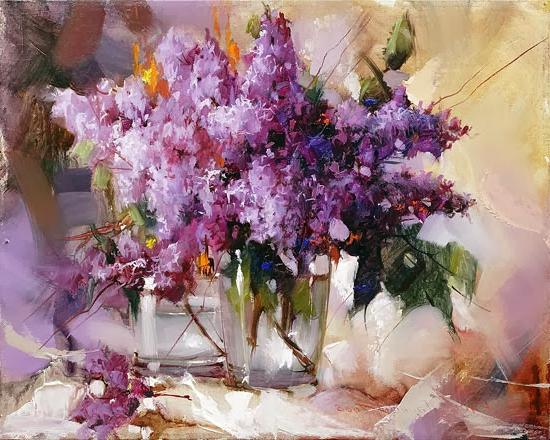
As an old and revered genre, still life in painting knew its ups and downs. Severe, ascetic and minimalistic helped to create immortal monumental generalized lofty heroic images. Sculptors with extraordinary expressiveness enjoyed the image of individual objects. Types of still life in painting and all sorts of classifications originated during the formation of art history, although the canvases existed long before the writing of the first textbook.
Icon painting traditions and still lifes
In ancient Russian icon painting, those few things that the artist dared to introduce into the strict laconism of canonical works played a big role. They contribute to the manifestation of everything immediate and demonstrate the expression of feelings in a work devoted to an abstract or mythological plot. 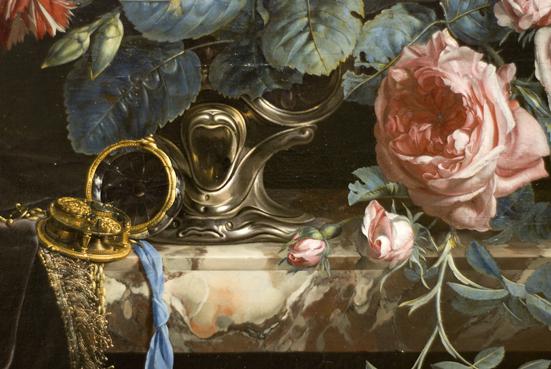
Types of still life in painting exist separately from icon-painting works, although a strict canon does not prohibit the depiction of some objects inherent in the genre.
still life renaissance
However, the works of the 15th-16th centuries play an important role in the Renaissance. The painter first drew attention to the world around him, sought to determine the significance of each element in the service of mankind. 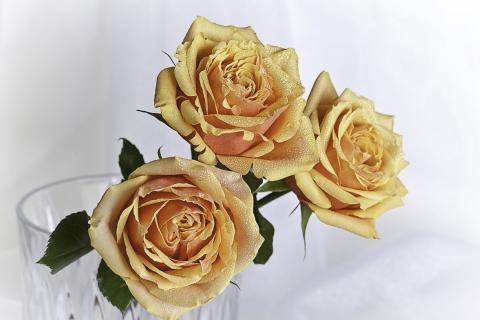
Modern painting, still life as a popular and beloved genre originated in the Tricento period. Household items acquired a certain nobility and significance of the owner they served. On large canvases, a still life, as a rule, looks very modest and discreet - a glass jar of water, the silver of an elegant vase or delicate lilies on thin stems often huddled in a dark corner of the picture, like poor and forgotten relatives.
Nevertheless, in the image of beautiful and close things there was so much love in poetic form that modern painting, still life and its role in it already timidly looked through gaps in landscapes and heavy curtains of genre scenes.
Crucial moment
Subjects gained a real element in paintings and a new meaning in the 17th century - an era when still life with flowers prevailed and dominated. Painting of this kind has gained numerous admirers among the nobility and the clergy. In complex compositions with a pronounced literary storyline, the scenes got their place along with the main characters. Analyzing the works of the era, it is easy to see that important role still life similarly manifested itself in literature, theater and sculpture. Things began to "act" and "live" in these works - they were shown as the main characters, demonstrating the best and most beneficial aspects of objects. 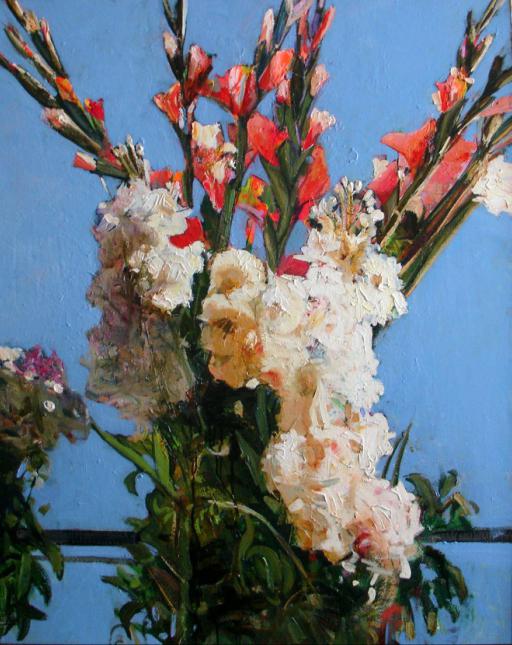
Objects of art made by hardworking and talented craftsmen bear a personal imprint of thoughts, desires, and inclinations. specific person. painting is the best psychological tests help track psycho-emotional state and achieve inner harmony and integrity.
Things faithfully serve a person, adopting his enthusiasm for household items and inspiring owners to purchase new beautiful, elegant little things.
Flemish Renaissance
Gouache painting, still life as a genre people did not immediately accept. The history of the emergence, development and widespread implementation of various ideas and principles serves as a reminder of the constant development of thought. Still life became famous and fashionable in the middle of the 17th century. The genre began in the Netherlands, bright and festive Flanders, where nature itself is conducive to beauty and fun.
Gouache painting, still lifes flourished in a time of grandiose changes, a complete change of political, social and religious institutions.
flanders current
The bourgeois direction of the development of Flanders was a novelty and progress for the whole of Europe. Changes in political life led to similar innovations in culture - the horizons that opened up before artists were no longer limited to religious prohibitions and were not supported by the relevant traditions.
Still life became the flagship of the new art, which glorified everything natural, bright and beautiful. The strict canons of Catholicism no longer held back the flight of imagination and curiosity of painters, and therefore science and technology began to develop along with art. 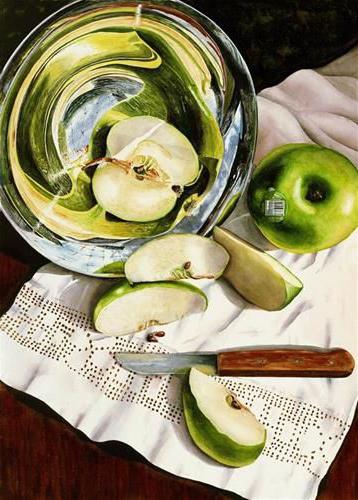
Ordinary everyday things and objects, previously considered base and unworthy of mention, suddenly rose to the objects of close study. Decorative painting, still life and landscapes have become a real mirror of life - daily routine, diet, culture, ideas about beauty.
Genre properties
It is from here, from the conscious, in-depth study of the surrounding world, a separate genre of everyday painting, landscape, still life has developed.
Art, which acquired certain canons in the 17th century, determined the main quality of the genre. Painting, dedicated to the world things, describes the basic properties inherent in the objects that surround a person, shows the attitude of the master and his hypothetical contemporary to what is shown, expresses the nature and completeness of knowledge about reality. The artist must have conveyed material existence things, their volume, weight, textures, colors, the functional purpose of household items and their vital connection with human activities.
Tasks and problems of still life
Decorative painting, still life and domestic scenes absorbed the new trends of the era - the departure from the canons and the simultaneous preservation of the conservative naturalism of the image.
Still life revolutionary era times complete victory bourgeoisie reflects the artist's respect for new forms national life compatriots, respect for the work of ordinary artisans, admiration for beautiful images beauty.
The problems and tasks of the genre formulated in the 17th century were not generally discussed in European schools until the middle of the 19th century. Meanwhile, the artists constantly set themselves new and new tasks, and did not continue to mechanically reproduce ready-made compositional solutions and color schemes.
Modern canvases
Photos of still lifes for painting, prepared in modern studios, clearly demonstrate the difference between the perception of the world by a contemporary and a person of the Middle Ages. The dynamics of objects today exceeds all conceivable limits, and the statics of objects was the norm for that time. Color combinations of the 17th century are characterized by brightness and purity of color. Saturated shades harmoniously fit into the composition and emphasize the idea and idea of the artist. The absence of any canons in the best way influenced the still lifes of the 20th and 21st centuries, sometimes striking the imagination with their ugliness or deliberate variegation. 
Methods for solving the problems of still life are rapidly changing every decade, methods and techniques do not keep up with the imagination of recognized and not so masters.
The value of today's paintings lies in the expression of reality through the eyes of contemporary artists; through the embodiment on the canvas, new worlds arise that can tell a lot about their creators to the people of the future.
Influence of Impressionism
The next milestone in the history of still lifes was impressionism. The whole evolution of the direction was reflected in the compositions through colors, technique and understanding of space. The last romantics of the millennium transferred life to the canvas as it is - quick, bright strokes and expressive details became the cornerstones of style.
Paintings, still lifes of modern artists certainly bear the imprint of impressionist inspirers through color, ways and techniques of image.
Departure from the standard canons of classicism - three plans, central composition and historical heroes- allowed the artists to develop their own perception of color and light, as well as to demonstrate the free flight of emotions to the audience in an accessible and visual way.
The main tasks of the Impressionists are to change the painting technique and psychological content paintings. And today, even knowing the situation of that era, it is difficult to find the correct answer to the question of why impressionist landscapes, as joyful and unsophisticated as poetry, caused sharp rejection and rude ridicule from picky critics and an enlightened public.
Impressionist painting did not fit into the generally accepted framework, so still lifes and landscapes were perceived as something vulgar, unworthy of recognition along with other dregs of high art.
The art exhibition, which became a kind of missionary activity for famous artists of that time, was able to reach the hearts and demonstrate the beauty and grace. Images of objects and objects by all available means became commonplace even within the walls of formidable institutions that profess only the principles of classical art. The triumphal procession of still life paintings has not stopped since the end of the 19th century, and the variety of genres and techniques today makes it possible not to be afraid of any experiments with color, textures and materials.
Still life, fine art genre
In the 19th century the fate of the still life was determined by the leading masters of painting, who worked in many genres and involved the still life in the struggle of aesthetic views and artistic ideas (F. Goya in Spain, E. Delacroix, G. Courbet, E. Manet in France). Among the masters of the 19th century who specialized in this genre, A. Fantin-Latour (France) and W. Harnet (USA) also stand out. The new rise of still life was associated with the performance of post-impressionist masters, for whom the world of things becomes one of the main themes (P. Cezanne, V. van Gogh). Since the beginning of the XX century. still life is a kind of creative laboratory of painting. In France, the masters of Fauvism (A. Matisse and others) follow the path of heightened identification of the emotional and decorative-expressive possibilities of color and texture, and the representatives of cubism (J. Braque, P. Picasso, X. Gris and others), using the the specifics of still life artistic and analytical possibilities, seek to establish new ways of conveying space and form. Still life also attracts masters of other trends (A. Kanoldt in Germany, G. Morandi in Italy, S. Lukyan in Romania, B. Kubista and E. Filla in the Czech Republic, etc.). Social trends in the still life of the 20th century are represented by the work of D. Rivera and D. Siqueiros in Mexico, R. Guttuso in Italy.
In Russian art still life appeared in the 18th century. together with the affirmation of secular painting, reflecting the cognitive pathos of the era and the desire to truthfully and accurately convey the objective world ("tricks" by G. N. Teplov, P. G. Bogomolov, T. Ulyanov, etc.). The further development of Russian still life for a considerable time was episodic. Its some rise in the first half of the XIX century. (F. P. Tolstoy, school of A. G. Venetsianov, I. T. Khrutsky) is associated with the desire to see beauty in the small and ordinary. In the second half of the XIX century. I. N. Kramskoy, I. E. Repin, V. I. Surikov, V. D. Polenov, I. I. Levitan turned to the still life of a sketchy nature only occasionally; the auxiliary significance of still life in the artistic system of the Wanderers followed from their idea of the dominant role of the plot-thematic picture. The independent significance of the still life-study increases at the turn of the 19th and 20th centuries. (M. A. Vrubel, V. E. Borisov-Musatov). The heyday of Russian still life falls on the beginning of the 20th century. His best examples include the impressionistic works of K. A. Korovin, I. E. Grabar; the works of the artists of the "World of Art" (A. Ya. Golovin and others) that subtly play with the historical and everyday character of things; sharply decorative images of P. V. Kuznetsov, N. N. Sapunov, S. Yu. Sudeikin, M. S. Saryan and other painters of the Blue Rose circle; bright, imbued with the fullness of being still lifes of the masters of the "Jack of Diamonds" (P. P. Konchalovsky, I. I. Mashkov, A. V. Kuprin, V. V. Rozhdestvensky, A. V. Lentulov, R. R. Falk, N. S. Goncharova). The Soviet still life, developing in line with the art of socialist realism, is enriched with new content. In the 20-30s. it includes both the philosophical understanding of modernity in compositionally sharpened works (K. S. Petrov-Vodkin), and thematic “revolutionary” still lifes (F. S. Bogorodsky and others), and attempts to tangibly regain the “thing” rejected by the so-called non-objectives through experiments in the field of color and texture (D. P. Shterenberg, N. I. Altman), and a full-blooded recreation of the colorful richness and diversity of the objective world (A. M. Gerasimov, Konchalovsky, Mashkov, Kuprin. Lentulov, Saryan, A. A . Osmerkin and others), as well as the search for subtle color harmony, the poeticization of the world of things (V. V. Lebedev, N. A. Tyrsa and others). In the 40-50s. P. V. Kuznetsov, Yu. P. P. Konchalovsky, V. B. Elkonik, V. F. Stozharov, A. Yu. Nikich. Among the masters of still life in the Union republics, A. Akopyan in Armenia, T. F. Narimanbekov in Azerbaijan, L. Svemp and L. Endzelina in Latvia, N. I. Kormashov in Estonia stand out. The attraction to the increased "objectivity" of the image, the aestheticization of the world of things surrounding a person determined the interest in still life of young artists of the 70s and early 80s. (Ya. G. Anmanis, A. I. Akhaltsev, O. V. Bulgakova, M. V. Leis, etc.).
Lit .: B. R. Vipper, The problem and development of still life. (Life of things), Kazan, 1922; Yu. I. Kuznetsov, Western European still life, L.-M., 1966; M. M. Rakova, Russian still life of the late XIX - early XX centuries, M., 1970; I. N. Pruzhan, V. A. Pushkarev, Still life in Russian and Soviet painting. L., ; Yu. Ya. Gerchuk, Living things, M., 1977; Still life in European painting of the 16th - early 20th century. Catalogue, M., 1984; Sterling Ch., La nature morte de l "antiquité a nos jours, P., 1952; Dorf B., Introduction to still-life and flower painting, L., 1976; Ryan A., Still-life painting techniques, L. , 1978.
Still life (fr. nature morte - “dead nature”) is a genre of fine art in which objects around us are depicted that have a semantic connection with each other. This type art attracts with its large pictorial possibilities, which contribute to the development of compositional skills and color construction.
Still life conveys to us certain images and symbols of the world around us. Involves us in the world of communication of objects, providing an opportunity to be in the role of an interlocutor. A true artist organizes the opportunity for the viewer to see secret meaning objects around us. By pre-selecting and building certain attributes into a certain composition, which carries a specific semantic task.
Still life originated in Europe during the 16th and 17th centuries, but its prehistory arose much earlier. Along with the everyday genre, still life for a long time could not take a leading position in painting. Since it was considered impossible to convey the main social ideas through this type of painting. Thanks to the great masters, this genre was recognized as quite capable of transmitting various social conditions, thereby affecting various social virtues. With the help of various attributes, one or another image was created, reflecting the meaning of the main idea. Household items classified the social status, lifestyle of their owner, which was significant for conveying images of social strata.
Turning to the chronology of art history, one can trace the succession of the rise and fall of such a peculiar genre as still life.
“The formation of still life as an independent genre of painting was due to the work of Dutch and Flemish artists of the 17th century. The 17th century in Europe is marked as the heyday of the still life. During this period, all the main varieties of still life were created.
The progressive development of still life in Western European painting of the 17th century can be largely explained by the peculiarities of the general cultural and worldview situation, in particular, the ultimate dilution and at the same time the mutual personification of such categories as material and spiritual, individual and universal. In the still life, the most concrete of all the specificities of this world was artistically affirmed - a thing, a product of a very specific human activity, at the same time, these earthly man-made things were endowed with an allegorical, emblematic meaning, perceived as signs of immaterial, spiritual values, as personified meditation on meaning human life. A thing, having lost its allegorical meaning, ceases to be an object of great art. The genre of still life begins to gradually become obsolete.
Its revival takes place at the end of the 19th - beginning of the 20th century. Due to its plot and, to some extent, semantic sterility, still life in these stormy decades for the development of art turns out to be especially convenient for creative experimentation. One of the most conservative, from the point of view of iconography, one of the most well-established in terms of composition, still life allowed artists to carry out the most daring, sometimes paradoxical violations of the laws of the genre, while remaining within it. Most of the experiments in this area had as their task the most complete plot and figurative decoupling of things.
Things, as it were, go beyond their boundaries, lose their self-significance, cease to be equal to themselves. They either dissolve in light and color, disperse in the radiation of energies, or condense into clumps of matter, forming combinations of the simplest volumes, or crumble into many fragments - and from all this new extra-substantial or, conversely, super-substantial things are created on the canvas. As in the paintings of the 17th century, they have an allegorical meaning, but, unlike classical still lifes, the role of primary elements in these pictorial cryptograms is performed not so much by the objects themselves as by their individual features, their qualities being saturated with increased semantic tension.
In the early years of the 20th century, there was not only a blurring of the boundaries of things within the still life, but also a significant blurring of the boundaries of the genre itself. In the open canvases of Matisse, the objects that make up the still life, permeated with the organic rhythms of nature, merge with the landscape or turn into a landscape themselves, overcoming the barrier between the world of the living and the world of the inanimate. In the constructed cubist landscapes of Picasso, nature itself is objectified, acquires the features of being made, materiality, the landscape is likened to a still life. .
“Still life also occupied a prominent place in the work of French impressionist artists (Manet, Cezanne, Monet, etc.). They sought to embody the first fresh impressions of what they saw in their works. For their still lifes, as well as for the painting of the Impressionists in general, they are characterized by: the harmony of pure colors perceived directly in nature, the naturalness and vitality of the composition.
One of the best craftsmen still life was the famous French artist Chardin, who managed to penetrate the intimate life of the most ordinary things, bring them closer to the viewer, and this more contributes to the soft color of his paintings, deeply thought out and coming from the observation of life, simplicity and naturalness in the arrangement of objects.
In Chardin's still lifes, there are no strict schemes developed by the Dutch school, monotony in compositional techniques, choice of subjects, palette of colors. .
In Russia, still life, as an independent genre of painting, appeared in early XVIII century. The idea of it was originally associated with the image of the gifts of the earth and the sea, diverse world things around the person. Until the end of the 19th century, the still life, in contrast to the portrait and historical painting, was regarded as an "inferior" genre. It existed mainly as educational setting and was allowed only in a limited sense as painting flowers and fruits.
The beginning of the 20th century was marked by the flourishing of Russian still life painting, which for the first time gained equality among other genres. The desire of artists to empower pictorial language accompanied active search in the field of color, form, composition. All this is especially evident in the still life. Enriched with new themes, images and artistic techniques, Russian still life developed unusually rapidly: in a decade and a half, it goes from impressionism to abstract form creation.
In the 1930s and 1940s, this development stopped, but since the mid-1950s, still life has experienced a new upsurge in Soviet painting, and from that time on it finally and firmly stands on a par with other genres.
AT fine arts the term "still life" refers to a specific genre of painting, including the free arrangement of objects Everyday life on the table:
- cut flowers, especially roses,
- kitchen utensils,
- household items,
- fruits, vegetables, fruits,
- food,
- fish,
- cooked food.
The term is a direct translation of the Dutch word "Stilleven", which has been used since 1656 to describe the genre of paintings. Previously, such canvases were simply called “Fruit”, “Flower”, “Roses”, “Breakfast”, “Banquet” or pronk (ostentatious).
In the Baroque era, allegorical images with religious overtones received the designation Vanitas ("vanity"). The obligatory attribute and the main accent in the paintings was the skull.
Conventionally, still lifes are divided into four main groups, including:
- floral;
- breakfasts or banquets;
- emotional;
- symbolic.
Some works are done to demonstrate the technical virtuosity of drawing and the ability of the artist, or to demonstrate emotion.
- emotional;
- luxurious;
- illusion canvases.
AT famous still lifes contained complex symbolic messages expressed in object types. When studying the composition of a still life, each displayed element was a symbol and brought into the picture certain value. As a result, the still life genre, like the landscape, usually does not contain human forms, but is capable of conveying a political, moral, or spiritual message. Although supporters of academic fine art consider still life to be the simplest among the five main genres.
Symbolic canvases are a broad category for any type of still life painting with a clear religious character. concrete example such symbolism is Vanitas painting, which flourished between 1620 and 1650 and contained symbolic images of skulls, candles, roses, hourglass, playing cards, butterflies and other items that should remind the viewer of the transience and triviality of earthly life. The symbolic images in the paintings are openly religious - bread, wine, water and others.
The main characteristics of the paintings
The magic of still lifes lies in the ability to show our own perception of ordinary objects around us. The particular arrangement and depiction of objects using paint, ink, pastels, or any other medium gives the objects a whole new meaning.
The objects selected for canvases have special meaning on a personal, cultural, social, religious or philosophical level. The themes surrounding works of fine art provoke introspection and reflection on the mood of the viewer. Therefore, the depicted objects evoke a wide range of emotions, depending on the placement, choice of color, lighting.
The subject matter in still life paintings is defined by the objects represented. The study of symbolism allows you to penetrate the meaning of the picture.  puddle emotions and events, which is based on the material qualities of color or texture. The themes are gracefully woven into the image of beautiful objects, but not everyone manages to see the meaning within the framework of one work.
puddle emotions and events, which is based on the material qualities of color or texture. The themes are gracefully woven into the image of beautiful objects, but not everyone manages to see the meaning within the framework of one work.
Story
The image of food was practiced in ancient world, but was revived in art history as an independent genre in the 16th century. Regardless of the formation of the name of the genre, still life actively developed in the north of Europe - in Holland and Flanders among the artists of the late Northern Renaissance. Schools of still life appear in Naples, Spain and France.
Historically, still life paintings have been imbued with religious and mythological meaning.
By the 16th century society was changing. Science and natural world began to displace religion in the paintings.
By the middle of the 19th century natural world and roses are out of fashion. In the works of painters, there was an interest in studying our inner world, moods and emotions.
In the 20th century, still lifes dissolved into geometry. By the end of the millennium, objects in paintings began to move into the pop art and photorealism movements. Paintings today include a limitless spectrum modern facilities From urinals to empty beer cans.
Still life of the Northern Renaissance and Dutch realism after 1517
The rich bourgeois society of the Netherlands is characterized by a materialistic display of ostentatious consumption. But it was in Western European painting that esoteric Christian symbolism and its Difficult language during the Middle Ages and the Renaissance.
Still life began to be called "dead nature or nature", and the paintings contained an emphasis on inanimate symbolic connotations. Symbolism developed in the abstract and metaphysical mannerism of Italy, Spain in the 17th century:
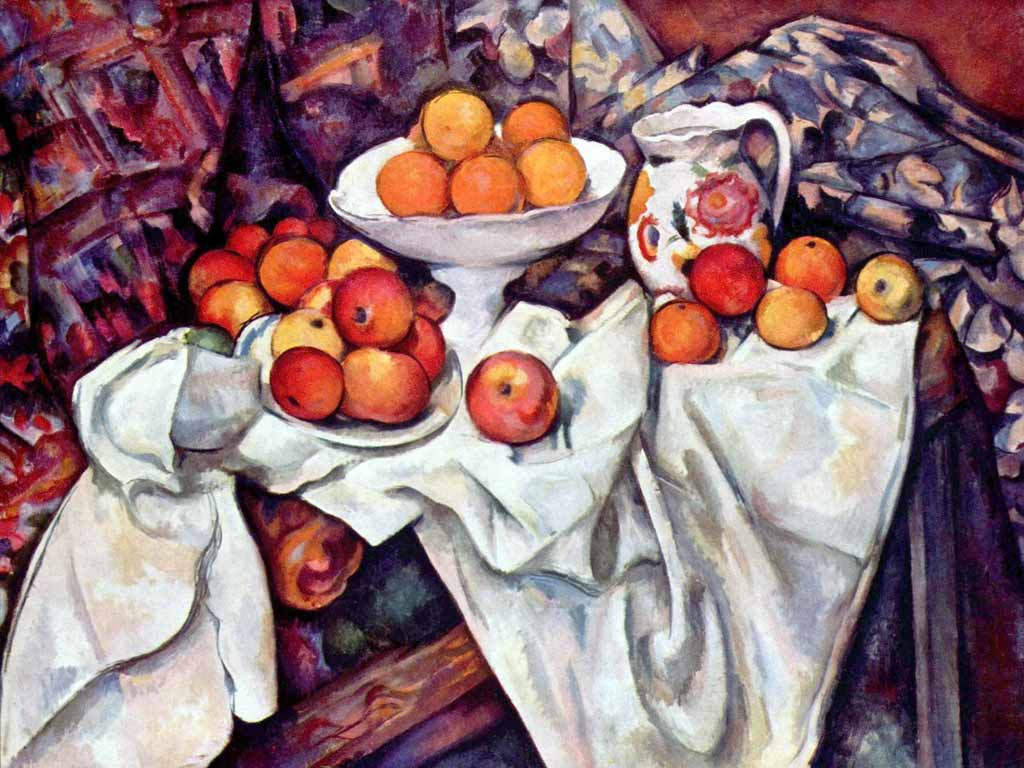
In the 18th century
In French painting, J. B. Chardin (1699-1779) was a master of many types of still life, from modest kitchen objects to unique allegories and the poetic conveyance of emotions by the simple arrangement of fruits and roses. His works are distinguished by realism due to the play of color and the artistic transmission of lighting.
Anna Coster (1744-1818) was a follower of Chardin. Her work is often confused with the master. But Koster's compositions are more delicate and reproduce very strange subjects.
The extravagant collections of corals and shells on the stone shelf amaze with almost photographic accuracy.
In the 19th century
Until the mid-nineteenth century, still life was considered an inferior genre with limited potential for expressing a theme. The philosophy of realism and pure painting by Courbet (1819-1877) was regarded as an independent vehicle for form, color and paint. The painters ignored the mocking attitude towards the genre.
The revolution in painting led by Manet, Renoir (1841-1919), Cezanne (1839-1906), C. Monet (1840-1926) and Van Gogh (1853-1890) forever closed the topic of this discussion. Admirers recognized that still life is an eloquent, poetic, "noble" genre of fine art.
In the 20th century
Inanimate objects in the new still life express the mystery of the world through the correspondence between forms and space.
Everyone admired Manet's plate of oysters, Cezanne's skulls and clocks, or Van Gogh's iris vase as wonderful interpretations of the world around them.
Cezanne depicts an apple as a woman or a mountain, and J. Braque (1882-1963) depicts an apple as a set of overlapping geometric faces.
The transformation of form and content into the purest elements of geometry, colors, and symbolism are visible in the compositions of G. Chirico (1888-1976) and S. Dali (1904-1989) - this is the beginning of the 20th century.
The mysterious G. Morandi (1890-1964) brought his own style to painting - plasticity with a limited palette, reminiscent of Roman painting.
The genre was exploited to the maximum by Pablo Picasso (1881-1973), striking with inconceivable forms and a wide range of stylistic permutations.
The famous pop art of Andy Warhol transforms an everyday object into a colossal image.
Artists in the 20th century used the still life as a laboratory to discover new techniques and test new conceptual ideas. They did so in representational and abstract formats, expanding into other genres, mixing painting with sculpture, collage, photography, video and holograms, in works that are classified as still lifes. In the canvases today you can see the differences:
- In color from cold to warm;
- In colors from contrasts to nuanced tones;
- In the direction of illumination on the canvas;
- In the background arrangement of objects;
- In the formulation of the problem from a decorative function to a realistic image.
The freedom of style to convey the image with the help of cubism, cubo-futurism, pop art, photorealism, neo-pop allows you to present still lifes in a new way, which is why the genre continues to delight fans.
 Oratory as a prototype of journalism
Oratory as a prototype of journalism Quotes about Napoleon - dslinkov — LiveJournal
Quotes about Napoleon - dslinkov — LiveJournal Me vengeance The man on the bulldozer destroyed the city
Me vengeance The man on the bulldozer destroyed the city